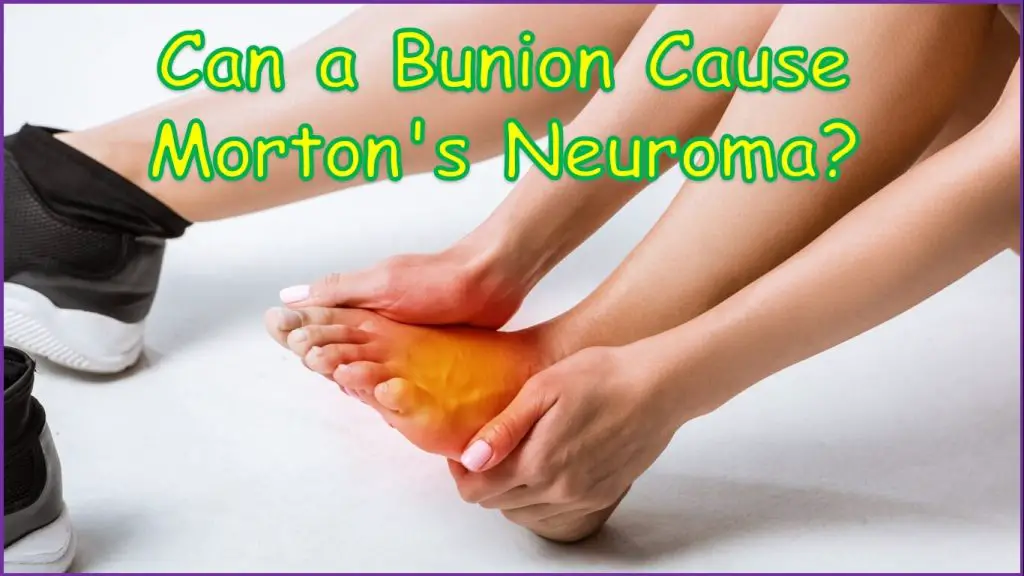Can A Bunion Cause Morton’s Neuroma?
No, a bunion itself does not directly cause Morton’s neuroma, but they can share common risk factors and sometimes coexist.
What Is A Bunion?
A bunion is a bony bump that forms on the joint at the base of the big toe. This condition occurs when the big toe pushes against the next toe, causing the joint to become enlarged and protrude outward. Bunions are more common in women than men, and they tend to develop over time.
What Is Morton’s Neuroma?
Morton’s Neuroma is a painful condition that affects the ball of the foot, particularly the area between the third and fourth toes. This condition is caused by the thickening of the tissue around the nerves leading to the toes, causing pain, numbness, and tingling sensations. Morton’s Neuroma is more common in women than men, and it tends to develop over time.
Can A Bunion Cause Morton’s Neuroma?
While a bunion itself doesn’t cause Morton’s Neuroma, it can contribute to its development. The pressure caused by a bunion can compress the nerves in the foot, leading to nerve damage and, ultimately, Morton’s Neuroma.
In some cases, the symptoms of Morton’s Neuroma can be mistaken for those of a bunion. However, a bunion typically causes pain and discomfort on the side of the big toe, while Morton’s Neuroma causes pain and discomfort in the ball of the foot.
How To Treat Bunions And Morton’s Neuroma?
The treatment for bunions and Morton’s Neuroma varies depending on the severity of the condition. In mild cases, conservative measures such as rest, ice, and over-the-counter pain relievers can help alleviate the symptoms.
For more severe cases, a doctor may recommend physical therapy, custom orthotics, or surgery. Surgery is typically reserved for cases where conservative treatments have failed.
Preventing Bunions And Morton’s Neuroma
While some factors that contribute to the development of bunions and Morton’s Neuroma are outside of our control, there are several things we can do to prevent them from occurring.
Maintaining a healthy weight and wearing properly fitting shoes are two essential steps to preventing bunions and Morton’s Neuroma. Additionally, avoiding high heels and shoes with a narrow toe box can help reduce the pressure on the foot and prevent the development of these conditions.
Conclusion
In conclusion, while a bunion doesn’t directly cause Morton’s Neuroma, it can contribute to its development. It’s important to take steps to prevent the development of both conditions, such as wearing properly fitting shoes and maintaining a healthy weight. If you experience any symptoms of bunions or Morton’s Neuroma, it’s essential to seek medical attention promptly. [1]
We hope this comprehensive guide has helped answer your question, and we wish you the best of luck in your journey towards healthy feet.
If you found this article informative, please consider sharing it with others who may benefit from this information. Together, we can raise awareness about foot health and help others find relief from conditions like bunions and Morton’s neuroma. Thank you for your support!
See Also:
- Bunion surgery recovery week by week
- 4 weeks after bunion surgery
- Best shoes for ankle support
- Best bunion corrector
- Gout vs bunion
- What to expect 3 weeks after bunion surgery
- Lapiplasty bunion surgery pros and cons
- Heels for flat feet
- How to get rid of tailor’s bunion without surgery
- Can Bunions Cause Foot Cramps?
- Can Bunions Cause Arch Pain?
- Can Bunions Cause Ankle Pain?
- Best shoes for ingrown toenails
- Can Bunions Cause Foot Swelling on Top of Foot?
- Can Bunions Cause Back Pain
- Can Bunions Cause Knee Pain?
- Can Bunions Cause Sciatica?
- Hard bump between toes
